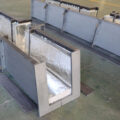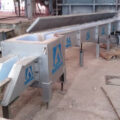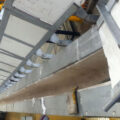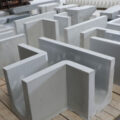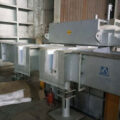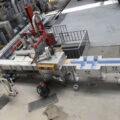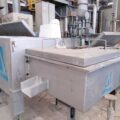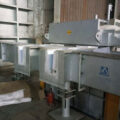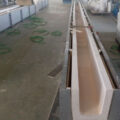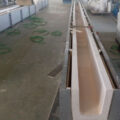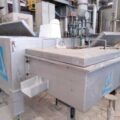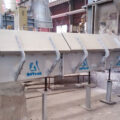Metal Launder System for Molten Aluminum Conveying is one of the basic equipment for aluminum alloy casting, it can ensure metal quality.
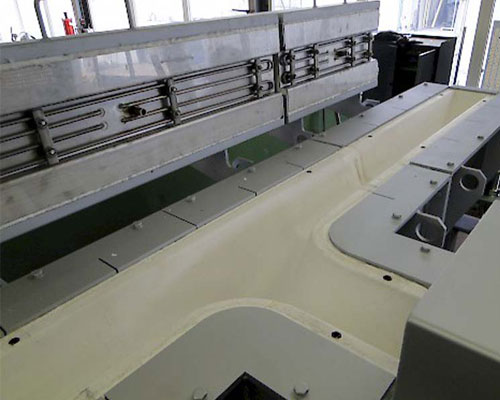
The main function of Casting launder is to divert the aluminum liquid from the furnace to the casting machine. The working area was originally built using a flow tank for the traditional high-temperature resistant castable. In the process of use, the surface is easy to stick aluminum, the working time of the operator is up to 30 minutes when cleaning the launder, and the casting material is easily damaged, so that the high-temperature aluminum liquid penetrates into the casting material, causing the shell steel plate to gradually deform, and the flow tank is 4 months. It can’t be used normally. In addition, each pair of launders is maintained once, the castables need to be removed, and the shell steel plates are calibrated and rebuilt, and the maintenance process is labor-intensive.
In response to this problem, the operation area is retrofitted to the ceramic launder after referring to the use condition of the same industry. The new flow tank after the transformation has high overall strength and large unit density. The surface of the high-alloy DC tank is coated with high-temperature refractory coating is not easy to stick to aluminum, and the internal slag is easy to clean. Under high temperature conditions, there is no damage or cracking in two years, and there is no leakage of aluminum at the flow channel interface and the bottom, which eliminates the safety hazard of aluminum leakage in the flow cell, and shuts down the flow cell. The time reduction of 20 minutes not only reduces the labor intensity of the general aluminum work, but also saves a lot of maintenance costs compared to the traditional use of the trough for two years.
Metal Launder System for Molten Aluminum Conveying Advantages
- Ensure metal quality by minimizing turbulence and oxides.
- Highly insulated holding temperature.
- Easy to clean.
- Reduce the demand for transmission equipment.
- Reduce manpower and forklift maintenance.
- Avoid the loss of molten metal caused by the turbulence in and out of the ladle.


